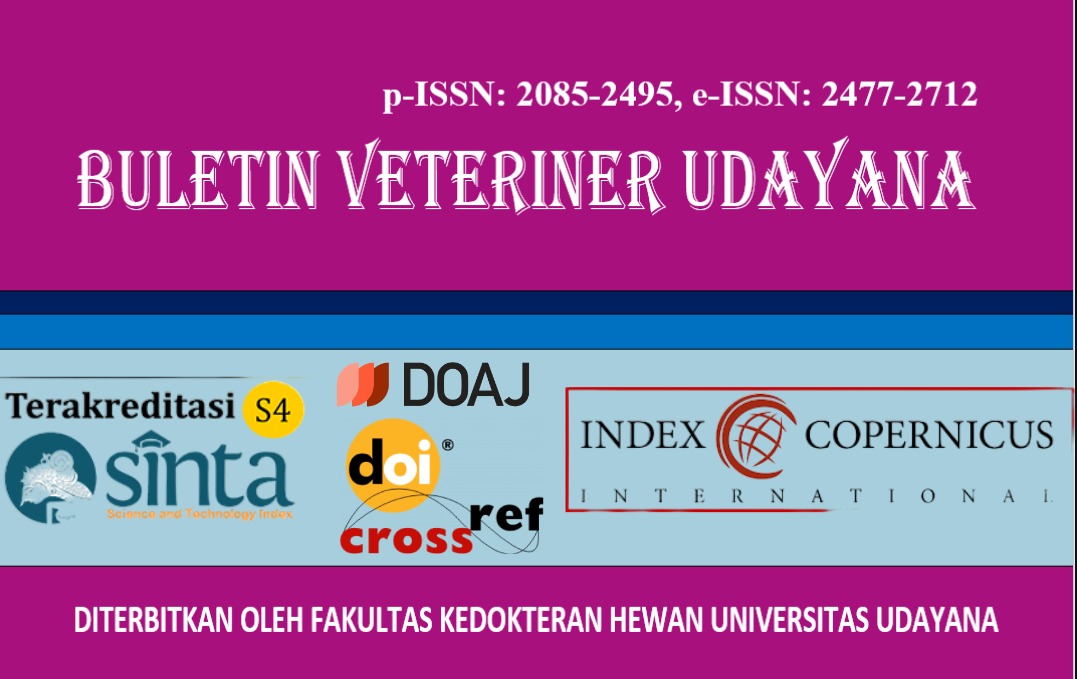THE EFFECT OF SEA GRAPES ON THE HISTOPATHOLOGICAL IMAGE OF THE BRAIN OF WHITE RATS GIVEN PARACETAMOL
DOI:
https://doi.org/10.24843/bulvet.2025.v17.i03.p45Keywords:
paracetamol, sea grapes, brain, histopathology.Abstract
Paracetamol is a commonly consumed analgesic and antipyretic drug, but has the potential to cause brain toxicity if consumed excessively. Sea grapes are known to contain many bioactive compounds such as phenolics, polyphenols, flavonoids, caulerpin and chlorophyll which have the potential to protect the brain from paracetamol toxicity. This study aims to determine the effect of administering sea grapes (Caulerpa lentillifera) and the difference in dosage on the histopathology of the brain of white rats (Rattus norvegicus) given paracetamol. This study used 25 male white rats consisting of five treatments, namely treatment group P0 (negative control), P1 (paracetamol 250 mg/kg body weight (BW)), P2 (paracetamol 250 mg/kgBW with sea grapes 10 g/kgBW), P3 (paracetamol 250 mg/kgBW with sea grapes 15 g/kgBW) and P4 (paracetamol 250 mg/kgBW with sea grapes 20 g/kgBW). The treatment was given for fourteen days, and on the fifteenth day a necropsy was performed to take the brain organ to make a histopathology preparation with Hematoxylin-Eosin staining. The variables examined were congestion, edema and necrosis. Histopathological analysis revealed significant reductions in congestion and edema (P < 0.05) in sea grapes-treated groups (P2–P4), with the most pronounced effect at 20 g/kgBW. No necrosis was observed across all groups, which may be due to the dose of paracetamol or the duration of paracetamol administration being insufficient to cause necrosis. The results of this study indicate that sea grapes have the potential as a neuroprotective agent that protects the brain from oxidative damage due to high-dose drug consumption. Further research is needed to evaluate the effect of sea grapes on the brain of white rats given paracetamol, using higher doses of paracetamol and sea grapes, or with a longer research period.




